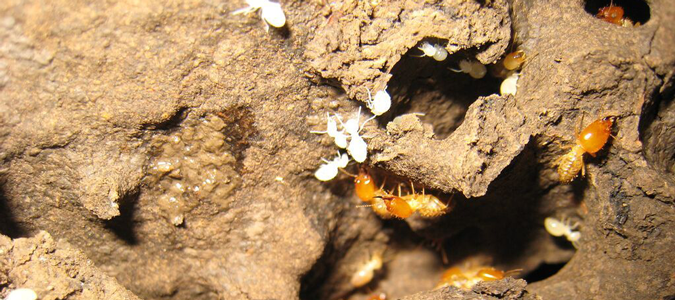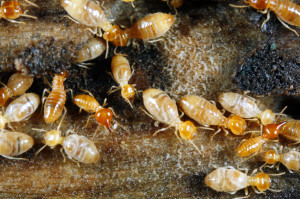
There are so many details that go into finding the right home:
- What neighborhood you’d like to live in?
- Does the size and layout of the house suit your family?
- What is your budget?
- How is the condition of the home?
What if you got all the way through the process, only to find that your dream home has termites?
Termites aren’t always a deal-breaker when it comes to buying a home — Knowing the extent of the infestation and damage are key factors.
Termite Red Flags You Should Know.
Subterranean termites are the most commonly found termite in the San Antonio metropolitan area. Drywood termites and Formosan termites are occasionally detected as well, but Subterranean termites are the main offenders in the area. As the name implies, subterranean termites live below ground. Like other termites, they consume materials with cellulose, such as wood and paper. And they can cause lots of damage in a short amount of time.
Subterranean termites work together in colonies to eat through cellulose and survive as a group. There are different types of termites in any given termite colony with distinct physical features. Only a few types of termites might be seen above ground, and these are worker termites, soldier termites, and reproductive termites. Worker termites are long and white, soldier termites have a large brown head, and reproductive termites have wings.

There are some tell-tale signs to look for that will give away the presence of termites in any home you consider buying. If you happen to be in or around the house when termites are swarming, you may actually see them. Swarming is the process of moving around during reproductive activity. You may see termites attempting to fly, or leftover wings around the house. You might also notice mud tubes in the yard or bubbles in wallpaper or paint. Termites build their nests underground, and work together to tunnel into the house, so raised mud tubes running straight to the foundation can be an indicator that termites are present. Bubbles in wallpaper or paint can also be a termite indicator as their movement pushes the paint or wallpaper away from the wall. Any distinct wood damage points to termites as well.
Once detected, subterranean termites can be eradicated using chemical treatments for the soil and foundation around the home, and using traps inside the home. In more aggressive infestations of dry wood termites, a tent may be installed to fumigate the home properly, but that is reserved for extreme cases. Any wood structures damaged beyond repair may need to be replaced as well after the termite treatment is complete. To keep a termite infestation from recurring, homeowners should keep moisture away from the foundation, seal all cracks in exterior walls, reduce humidity in the home’s ventilation system and keep wood (such as tree branches, wood scraps, etc.) away from the home’s foundation.
How do you protect yourself from the risk of termites during the home-buying process?
First, the seller is required by law to disclose any previous termite damage and treatment, as part of the seller’s disclosure. If you are financing the purchase of your home, the lender will most likely require that you have a termite inspection as part of the process. Even if the lender does not require it, it is critical to have a termite inspection of the home. This way, you know if there is any infestation, and if so, how bad the infestation is.
The extent of the infestation and how much it might cost to eradicate it will help you decide if you want to restart your home search or move forward with the purchase at an additional cost for termite damage repairs.